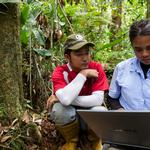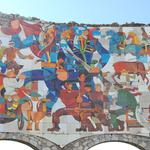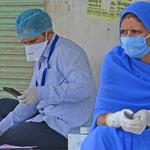Per Aarvik is no longer affiliated with CMI.
Publications

U4 Issue | 2022
Anti-corruption, transparency, and accountability in health management information systems. Exploring the potential of the District Health Information Software 2 (DHIS2)
The District Health Information Software 2 (DHIS2) offers a low-cost tool to strengthen countries’ capacity to collect and use health data, but it requires strong data governance to be equitable.
Daniel Sejerøe Hausenkamph, Daniela Cepeda Cuadrado, Per Aarvik, Monica Kirya (2022)
Bergen: Chr. Michelsen Institute (U4 Issue 2022:9)

U4 Issue | 2022
Safeguarding the Covid-19 vaccine distribution: Evaluating the role of blockchain
International organisations should examine blockchain’s effectiveness against the challenges identified. Effectiveness depends on technical capacity, trust, and a political commitment to reduce corruption.
Daniela Cepeda Cuadrado, Daniel Sejerøe Hausenkamph, Per Aarvik, Clara Cardona, Marcelino Turati, Natalia Mejia Pardo (2022)
Bergen: Chr. Michelsen Institute (U4 Issue 2022:7)

U4 Guide | 2020
Apoyo a la sociedad civil durante la pandemia de Covid-19. El potencial de las colaboraciones en línea para la responsabilidad social
En tiempos de crisis, existen riesgos significativos de corrupción. La sociedad civil juega un papel importante en garantizar que los fondos para hacer frente a la pandemia de Covid-19 lleguen...
Saul Mullard, Per Aarvik (2020)
Bergen: Chr. Michelsen Institute (U4 Guide 2020:2)

U4 Guide | 2020
Supporting civil society during the Covid-19 pandemic. The potentials of online collaborations for social accountability
There are significant corruption risks during times of crisis. Civil society has an important role to play in ensuring funds to tackle the Covid-19 pandemic reach their destination. Donors and...
Saul Mullard, Per Aarvik (2020)
Bergen: Chr. Michelsen Institute (U4 Guide 2020:1)

U4 Issue | 2020
Blockchain as an anti-corruption tool. Case examples and introduction to the technology
The technology behind bitcoin and other cryptocurrencies was supposed to end poverty, eliminate corruption, and provide financial inclusion for all. The very financial institutions it was created to exclude are...
Per Aarvik (2020)
Bergen: Chr. Michelsen Institute (U4 Issue 2020:7)
U4 Report | 2019
Artificial Intelligence – a promising anti-corruption tool in development settings?
There are relatively few examples of how artificial intelligence has been deployed in anti-corruption work. Such tools are normally deployed by financial institutions or tax-authorities to uncover money-laundering, fraud, or...
Per Aarvik (2019)
Bergen: Chr. Michelsen Institute (U4 Report 2019:1)

U4 Brief | 2017
Digitizing the landscape: Technology to improve integrity in natural resource management
Many information technology initiatives have emerged in recent years with the aim of improving natural resource management. These take a variety of technological forms designed either to directly curb corruption...
Kendra Dupuy,Per Aarvik (2017)
Bergen: Chr. Michelsen Institute (U4 Brief 2017:1)
Newspaper Article | 2015
Den digitale dugnaden
Vi har lange tradisjoner for frivillighet her i Norge. Men organisert, digital frivillighet er knapt nok kjent og enda mindre utbredt. Vi har mye å lære av resten av verden.
Uten...
Per Aarvik (2015)
Bergens Tidende 21.07.2015

Blog post | 2022
Anti-corruption reforms have been successful in Georgia, but blockchain is stealing the limelight
Much has been written about blockchain's contribution to land registry reforms in Georgia. But much of the credit should go to longer-term institutional reforms.
Per Aarvik (2022)
U4 Blog Post

Blog post | 2022
Biometric data: putting people at risk in the name of anti-corruption
Databases of biometric information are increasingly used to identify citizens and improve services. But here we discuss the real risks to privacy, safety and equity.
Per Aarvik (2022)
U4 Blog Post

Blog post | 2022
Is blockchain hitching a ride on the Covid-19 vaccination wave?
The complexity and transnational nature of pharmaceutical supply chains demand sophisticated collaborations to ensure the safe distribution of vaccines – not just a safeguarding database.
Per Aarvik (2022)
U4 Blog Post

Blog post | 2021
Promising but disputed: is Blockchain the answer to fraud and corruption in education?
The promise of a technology delivering trust in trust-less environments, of immutability, security, traceability and transparency, has attracted many different industries to investigate blockchain as a tool to prevent fraud...
Per Aarvik (2021)
(ETICO)
Blog post | 2021
To defuse political violence across US, conflict mediators apply lessons from gang disputes and foreign elections
After a violent American election season, activists are trying to keep the peace using technologies and techniques more often applied in unstable democracies.
Joseph G. Boch, Marta Poblet, Per Aarvik (2021)
(The Conversation)
Blog post | 2020
African civil society is busy ensuring accountable Covid-19 relief
A U4 webinar has highlighted how, despite lockdowns, civil society can still play an anti-corruption role, monitoring Covid-19 emergency support. By turning to online collaboration, citizens can track how governments...
Per Aarvik (2020)
U4 Blog Post
Blog post | 2020
Digitalt samarbeid forebygger vold i USA
Amerikanske velgere har mobilisert for å få flest mulig til å stemme ved presidentvalget. Men de har også mobilisert for å dempe mulig vold og konfrontasjoner under valget og etter...
Per Aarvik (2020)

Blog post | 2020
Blockchain technology to prevent corruption in Covid-19 response: how can it help overcome risks?
Governments and donors are currently spending billions to deal with the Covid-19 pandemic. This includes outlays on medical technology and equipment, and cash support to individuals and businesses. How can...
Per Aarvik (2020)
U4 Blog Post

Blog post | 2020
How to do social accountability during distancing and lockdowns?
Saul Mullard and Per Aarvik (2020)
U4 Blog Post
Blog post | 2019
Exploring artificial intelligence for anti-corruption
There are relatively few examples of how artificial intelligence(AI) and machine learning (ML) have been deployed directly in anti-corruption work. Such technologies are more often implemented by investigators, banks, and financial institutions to...
Per Aarvik (2019)
(Medium, Insights from U4 Anti-Corruption Resource Centre)
Projects
Digital Revolutions: Assessing the Role, Influence, and Potential
Aug 2015 - Dec 2016